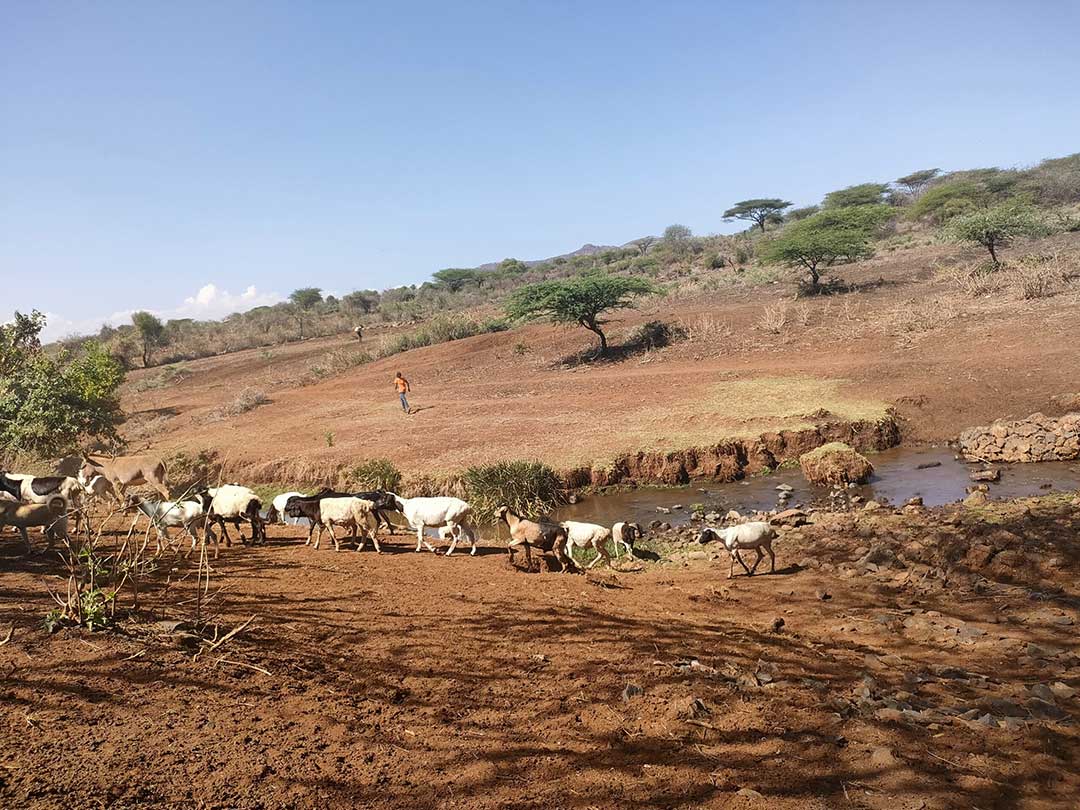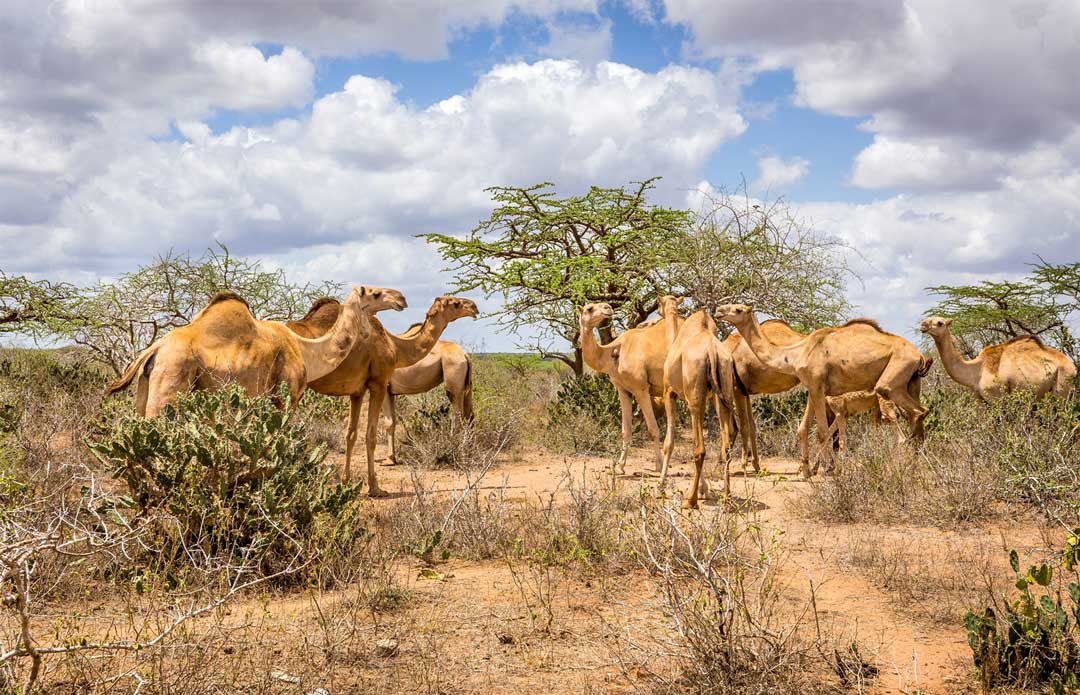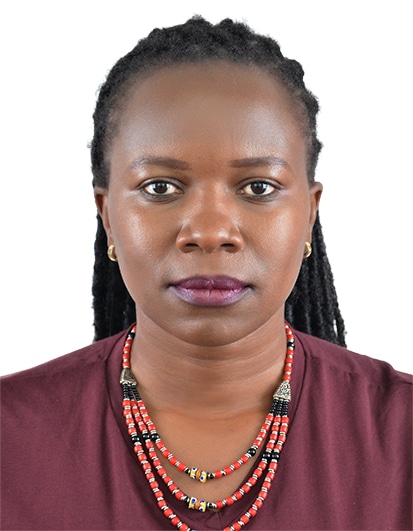Kenya’s economy is largely dependent on sectors and markets which are sensitive to the impacts of climate change, such as agriculture, water, tourism, and health. Kenya’s National Climate Change Action Plan (NCCAP) 2018-2022, a five-year plan to guide the mainstreaming of adaptation and mitigation actions into sectors at the national and county government level, estimates the long-term economic costs of floods and droughts to be 2-2.8% of Kenya’s GDP each year.
Commonwealth Alumnus, Robina B Abuya, worked as the Climate Change Specialist at Kenya Markets Trust (KMT) for the last 5 years. KMT is a Kenya-based NGO which seeks to develop market systems in the agricultural inputs, livestock, and water sectors in all 47 counties in Kenya.
These three sectors and the market systems within are climate-sensitive. Therefore, urgent and robust interventions, innovations, and policies are required to adapt to and mitigate the impacts of an unpredictable climate on both the economy and livelihoods. A large proportion of Kenya’s population are reliant on these sectors and so achieving positive action in response to climate change is critical to transforming the lives of many.
The Local Context
 In her role at KMT, Robina led the climate change function of the organisation. Her work cut across the agriculture inputs, livestock, and water sectors, where climate change is addressed through the incorporation of climate actions in interventions developed by KMT teams. Her work focused on ensuring interventions were either climate smart or climate neutral. She also contributed to local and national policies that impact these sectors, especially where they relate to the impact of climate change.
In her role at KMT, Robina led the climate change function of the organisation. Her work cut across the agriculture inputs, livestock, and water sectors, where climate change is addressed through the incorporation of climate actions in interventions developed by KMT teams. Her work focused on ensuring interventions were either climate smart or climate neutral. She also contributed to local and national policies that impact these sectors, especially where they relate to the impact of climate change.
Over 80% of Kenya is made up of arid and semi-arid land (ASAL) and extensive livestock production is managed in these regions. Many farming communities do not enclose livestock but allow free roaming, with communities relying on known weather patterns to manage livestock and grazing sites. The unpredictability of weather over the last few years due to climate change has made it difficult for livestock to be managed in this way, with famers losing cattle because of unexpected droughts at times when rainfall is typically expected.
Robina notes that while there is a general acknowledgement amongst the public and farming communities in Kenya that changing weather patterns are as a result of climate change, knowledge around how to adapt to or mitigate its effects is less widespread, with most of the communities relying on indigenous knowledge.
“[A]t the community level, say, or at the individual level also, in as much as they don’t understand it, they do know that this weather has changed… Because, for example, farmers usually start planting in March with the long rains that can enable a good harvest, therefore, every time it’s March, most farmers head to their farms to plant. However, in the recent years the government and other climate information providers, have been involved in giving warning messages on when it is the right time to plant, due to intermittent and unreliable rains.
“So, this now triggers appropriate actions by the individuals to start to understand that this is because of climate change. But beyond knowing ‘this is as a result of climate change’, the larger population does not put these changes into planning context or have a deep understanding of appropriate interventions.”
Maintaining the Value Chain Through Collaboration
The loss of cattle can be devastating to a farmer’s livelihood, to national food security, and to the livestock value chain in Kenya. With climate change an ever-increasing threat to agriculture and livestock management, Robina undertakes extensive needs-based research to understand the impact of climate change and identify adaptation actions.
One intervention Robina has implemented involved developing a collaboration between private investors and local farming communities to sustain the livestock value chain during droughts. In this intervention, Robina identified ranches managed by private investors within cattle farming areas in close collaboration with pastoral communities. Ranches are typically managed to support livestock farming, especially for commercial benefits. As such, the land is well-maintained throughout the year making it less susceptible to the impact of unpredictable weather and in ready-condition to host livestock.
“… how I come in is in [supporting] the livestock sector… working with the farmers and working with the private entities within the value chain to implement strategies or activities to ensure that the communities do not lose their livestock, and that they also maintain appropriate capacities. In the recent years, farming communities have started appreciating the commercial benefits of livestock, in addition to the cultural value they hold. This is especially due to increasing demand from the high-end market consumers of livestock products, such as beef, that can fetch a good price and financially empower the pastoral communities.”
Through a collaboration between pastoral farmers and ranch and conservancy owners, farmers are able to graze a proportion of their cattle in the ranch land during the drought period where they are fed, fattened, and eventually sold for beef at good prices. Cushioning pastoral farmers against drought or other climate extremes enables them to continue their traditional farming methods, whilst confident that they will sell their cattle and sustain their livelihood during the drought period.
Identifying Unexpected Opportunities
 Alongside the challenges posed by climate change on ASALs, Robina stresses that there are opportunities in these regions. For five years, she was engaged in climate change research in ASALs through the Collaborative Adaptation Research Initiative in Africa and Asia (CARIAA), implemented on behalf of the Overseas Development Organisation (ODI) and supported by the International Development Research Centre (IDRC). The aim was to create new knowledge on opportunities that exist in the ASALs, even with the realities of climate change, and how communities are coping with its effects.
Alongside the challenges posed by climate change on ASALs, Robina stresses that there are opportunities in these regions. For five years, she was engaged in climate change research in ASALs through the Collaborative Adaptation Research Initiative in Africa and Asia (CARIAA), implemented on behalf of the Overseas Development Organisation (ODI) and supported by the International Development Research Centre (IDRC). The aim was to create new knowledge on opportunities that exist in the ASALs, even with the realities of climate change, and how communities are coping with its effects.
In drought prone areas, crop production is not possible and livestock production thrives only for those animals that have adapted to the environment and harsh conditions. Through the research conducted, findings indicated that over years of climate variation the number of cattle were reducing, whilst goat, sheep, and camel populations were increasing, as they easily adapted to the increased temperature and lower quantity of pasture.
This evidence indicates that alternative livestock can be farmed to support the economy and food supply chains in ASAL regions. Robina noted that communities living in Kenya’s ASALs had already adopted camel meat as an alternative to beef, as they had experienced first-hand the declining cattle numbers and thriving of drought tolerant camels, and identifying an alternative food source was critical to their livelihood and food security.
Whilst those living in ASALs have adopted these alternatives out of necessity, further research and public awareness is needed to communicate the potential of alternative products to suppliers and consumers along the value chain. Gaining buy-in from these groups will be critical to making a climate positive change within Kenya’s livestock sector.
“[I]t is a huge opportunity that has not been explored and even not been captured very well in our policies on how to sustain vulnerable communities, especially in the ASALs, during harsh climatic changes.”
At the high-end of the market chain in cities such as Nairobi, health concerns are a major driver in influencing consumer habits. Following an analysis of the nutritional value of camel milk, it has been found to have a higher nutritional value than cow’s milk, making it an ideal product to be introduced into the value chain and sold as part of a healthy lifestyle. Robina feels that this evidence will be key to encouraging consumers to change their habits and perception of alternative products and introduce sustainable livestock policies.
Improving the Status of Women Farmers
 Changes to the type of livestock farmed in ASALs has the potential to also improve the economic welfare and status of women farmers in Kenya. Culturally, cattle have belonged to male members of a household who can expect a higher economic return on this livestock compared to small animals, such as goats and sheep, which are often managed by women.
Changes to the type of livestock farmed in ASALs has the potential to also improve the economic welfare and status of women farmers in Kenya. Culturally, cattle have belonged to male members of a household who can expect a higher economic return on this livestock compared to small animals, such as goats and sheep, which are often managed by women.
Whilst fetching a higher economic return, cattle require specific pasture and good quality water and environmental conditions to survive. With increasing and unpredictable droughts impacting cattle numbers and economic and food security, goats and sheep have less specific dietary requirements and can graze across grass, leaves, and shrubland. Their likelihood of survival during adverse weather is therefore higher than cattle, meaning women farmers can retain their livestock numbers and profit from the sale of goats and sheep, even during drought periods.
With a more climate sustainable livestock, women farmers can gain economic status and independence and support their families at times when cattle sales cannot be relied on.
Influencing Local and National Policy
As well as influencing sector interventions implemented by KMT, Robina says research evidence has contributed to policy-making at the local and national level in Kenya. In 2015, whilst working with KMT, she joined the Pathways to Resilience in Semi-arid Economies (PRISE), a five-year, multi-country research project that generated new knowledge about how economic development in semi-arid regions can be made more equitable and resilient to climate change. Robina was responsible for coordinating the research across four thematic areas: private sector opportunities in the ASALs; migration as an adaptation strategy; beef value chain in the rangelands; and land tenure systems and their drivers in the ASALs. The research was conducted across four counties, namely: Laikipia, Narok, Makueni, and Kajiado counties.
The aim of the research was to provide evidence to policy makers in Kenya on climate resilient economic development opportunities to influence policy decisions. At the time of the project ending, county and national government were looking to review their existing climate change plans and activities, making the research conducted by Robina and her teams timely and in demand.
“[T]owards the end of getting our findings, the counties and the national government were redeveloping their county development plans. So, they were reviewing their activities for the next five years. And the best way they can review their activities is to get evidence from research that has been done or research that is being carried out from practitioners that are carrying out activities in the same field.”
As a result, research findings conducted as part of the project have been included in Kenya’s NCCAP 2018-2022, and the research team were invited to actively participate in the development of Kenya’s County Integrated Plan, a five-year plan of development activities.
To support the adoption of the research findings in these plans, Robina delivered 10 county-level dissemination workshops and four national workshops, aimed at the different government stakeholders involved in reviewing government plans for climate change activities.
“[T]has was really great because in as much as we had imparted and we had shared our information, they were able to pick that information up and use it as a reference to set it in a national strategy document.”
Looking Back, Looking Forward
Robina feels the timeliness of her Commonwealth Scholarship at Heriot-Watt University to complete a master’s in Climate Change: Impacts & Mitigation and subsequent work and research has been critical to her professional development and the adoption of climate smart policies in Kenya.
“[At] the time when I was getting the master’s, I think I was lucky because in Kenya we did not have local universities and local institutions training on climate change specifically. And those who were working as climate change experts and specialists were from other fields like forestry and environment.”
At the time of her graduation, with few climate specialists available to advise on necessary climate adaptation and mitigation policies in Kenya, Robina’s expertise and knowledge were critical across several sectors. Following her master’s, she applied her skills in different settings, consulting on and developing environment impact assessments, carbon credits, agriculture, water, and wildlife and wildlands conservation.
Robina reports that following her studies she has seen climate change policies and awareness increase in Kenya and is proud that Kenya was amongst the first countries in Africa to implement the Climate Change Act. However, there is still work to be done.
At present, her research is focused on the agriculture sector and the impact and ongoing threat of climate change to farmlands, food security, and the agricultural economy. She is currently undertaking research into developing solutions to rebuild degraded carbon content of soil in farmlands to increase productivity. Looking to the future, she hopes to further use her research findings to influence national policy and action and is completing a PhD in Environmental Policy to support this.
“[O]ne of the things that has given me more interest is the policy aspect, because in my working I’ve realised that in as much as I may have the evidence, in as much as I may have the experience, I need [to turn] that into action. And one of the ways to do that is by being able to influence policy, to be able to be part of or contribute towards the development of workable policies.”
Robina B Abuya is a 2009 Commonwealth Shared Scholar from Kenya. She studied for a MSc in Climate Change: Impacts & Mitigation at Heriot-Watt University.
Robina works as a climate change specialist and consultant in Climate Change adaptation, mitigation, environmental impact assessment, feasibility studies, REDD+, and carbon studies among other fields of climate change. She is a registered Lead Expert with the National Environment Management Authority and practising member of the Environment Institute of Kenya.


